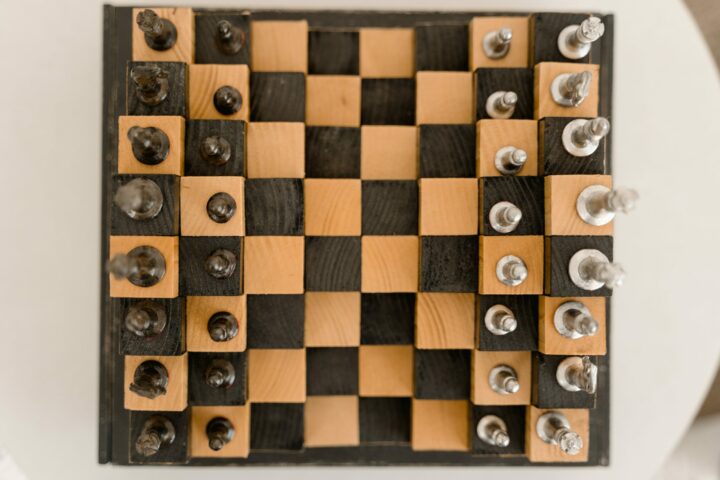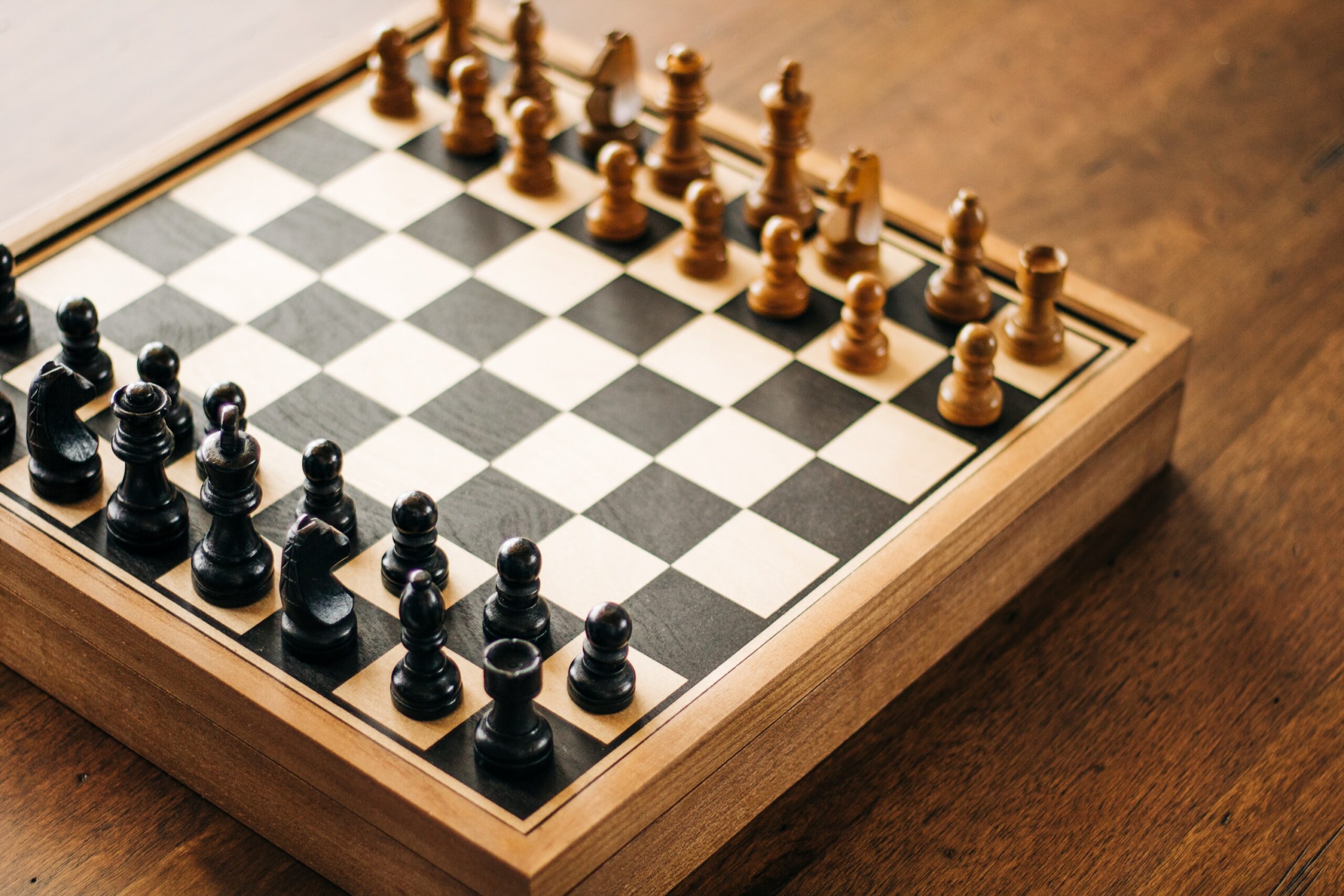The Vienna Game is a fascinating opening in chess that has perplexed and challenged players for generations. If you’ve ever wondered how to counter this formidable strategy and gain an upper hand, you’re in the right place.
In this article, we’ll delve into the intricacies of the Vienna Game, exploring powerful tactics and insightful maneuvers to help you emerge victorious. Prepare to elevate your chess game to new heights as we unravel the secrets behind this compelling opening.
What is the Vienna Game, and why is it a formidable challenge?
The Vienna Game is a dynamic chess opening that begins with 1.e4 e5 2.Nc3, setting the stage for an intricate battle for control. This opening is characterized by its aggressive nature and the potential for explosive attacks.
It presents a formidable challenge because it tests your ability to navigate through unfamiliar territory and make astute decisions from the very beginning. The Vienna Game demands tactical prowess, positional understanding, and the ability to adapt to unexpected twists. Get ready to engage in a thrilling and intellectually stimulating encounter on the chessboard.
How can I capitalize on the Vienna Game’s weaknesses to gain an advantage?

To exploit the weaknesses inherent in the Vienna Game, you must focus on undermining your opponent’s position while building your own strengths. Look for opportunities to challenge the central control established by your opponent’s pawns and seize control of the key squares.
Target any loose or vulnerable pieces your opponent may have inadvertently exposed. By disrupting their plans and maintaining active piece coordination, you can put pressure on their position and force them onto the defensive. Be vigilant, creative, and relentless in exploiting the vulnerabilities that arise during the course of the game.
What are the key principles for defending against the Vienna Game?
Defending against the Vienna Game requires a solid understanding of the fundamental chess principles. Maintain a firm grip on the center of the board by establishing a strong pawn structure. Develop your pieces harmoniously, ensuring they support each other and control important squares.
Keep a watchful eye on your opponent’s potential tactical threats and be prepared to respond with sound defensive moves. Strive for piece activity and coordination to neutralize your opponent’s attacking intentions. A proactive and resolute defense, combined with strategic maneuvering, will help you weather the storm of the Vienna Game.
Which pawn structures should I aim for to neutralize the Vienna Game’s impact?
Neutralizing the impact of the Vienna Game often involves strategic pawn play. Aim to establish a solid pawn structure that denies your opponent easy breakthroughs and restricts their piece mobility. Consider structures like the Caro-Kann, French Defense, or Scandinavian Defense, which can undermine the central pawn duo of your opponent.
Additionally, focus on maintaining a flexible pawn formation that allows you to adapt to changing circumstances and counterattack when opportunities arise. By skillfully managing your pawns, you can limit the Vienna Game’s influence and lay the foundation for a successful counter-offensive.
What are the most effective responses to the Vienna Game’s opening moves?
When faced with the Vienna Game’s opening moves, it’s crucial to respond with precision and purpose. Consider options such as developing your pieces actively to challenge your opponent’s central control.
Explore variations like the Falkbeer Counter Gambit, the Vienna Gambit, or the more solid approach of 2…Nc6. Each response carries its own unique characteristics, offering different strategic paths to pursue. Carefully analyze the resulting positions, evaluate the risks and rewards, and select the response that aligns with your playing style and overall game plan.
How can I disrupt my opponent’s plans and seize control of the board?
Disrupting your opponent’s plans in the Vienna Game requires a combination of tactical awareness and strategic maneuvering. Look for opportunities to create imbalances in the position through pawn breaks or piece sacrifices, unsettling your opponent’s position and forcing them into uncomfortable decisions.
Aim to restrict the mobility of their key pieces, undermine their pawn structure, and seize control of vital squares. By maintaining initiative and applying relentless pressure, you can gain the upper hand, dictate the flow of the game, and assert your dominance on the chessboard.
Which piece placements and maneuvers can help me counter the Vienna Game’s threats?
Countering the threats posed by the Vienna Game requires careful piece placement and tactical finesse. Develop your pieces harmoniously, prioritizing strong coordination and control over key squares.
Utilize strategic maneuvers such as centralizing your knights, establishing a solid bishop pair, or deploying your queen to exert pressure on vulnerable points in your opponent’s position.
Seek opportunities for tactical combinations that exploit weaknesses or generate counterplay. By positioning your pieces strategically and capitalizing on their collective power, you can effectively neutralize the threats posed by the Vienna Game and gain a decisive advantage.
What are the common mistakes to avoid when facing the Vienna Game?
When facing the Vienna Game, it’s essential to steer clear of common pitfalls that can lead to a compromised position. One mistake to avoid is neglecting your development and allowing your opponent to seize control of the center. Remember to prioritize piece development and secure a solid pawn structure to maintain a strong foundation.
Another error to be wary of is falling into tactical traps set by your opponent, such as premature pawn captures or unprotected pieces. Vigilance and cautious calculation will help you navigate through potential pitfalls and keep your position intact.
How can I exploit positional imbalances to my advantage in the Vienna Game?

Positional imbalances in the Vienna Game can provide opportunities for astute players to gain a strategic edge. Assess the pawn structure and identify weak squares or backward pawns that you can target. Plan your piece deployment accordingly, aiming to occupy these vulnerable areas with your pieces and exert pressure.
Exploit imbalances by favorably exchanging pieces or utilizing outposts for your knights. Maintain a flexible approach, ready to adapt your strategy based on the specific imbalances present in the position. By capitalizing on these imbalances, you can seize control and dominate the game.
Are there any specific tactics or combinations that work well against the Vienna Game?
In the Vienna Game, certain tactics and combinations can be particularly effective in dismantling your opponent’s position. Look for tactical motifs like discovered attacks, pins, or forks that exploit the coordination of your opponent’s pieces.
Utilize tactical ideas such as undermining their central pawns, initiating pawn breaks to open lines, or sacrificing material for a devastating attack. The specific tactics and combinations will depend on the position and the moves played, so remain alert and be ready to seize the opportune moment to execute your tactical brilliance.
How can I maintain a balanced position while countering the Vienna Game?
Maintaining a balanced position while countering the Vienna Game is crucial for ensuring long-term success. Focus on harmonious piece development and central control to establish a solid foundation.
Avoid overextending or neglecting certain areas of the board, as this can create weaknesses that your opponent can exploit. Aim for piece coordination and flexibility, allowing for smooth transitions between the opening and middle game.
Strive for dynamic equilibrium by anticipating your opponent’s threats, countering them effectively, and maintaining a harmonious balance between offense and defense.
What are the typical midgame plans to follow after surviving the Vienna Game?
After surviving the initial stages of the Vienna Game, it’s time to transition into the midgame with a clear plan in mind. Evaluate the resulting position and identify any imbalances or weaknesses in your opponent’s position. Develop a concrete strategy based on these factors.
Typical midgame plans may include focusing on piece activity and centralization, coordinating your pieces for optimal effectiveness, and initiating pawn breaks to open up lines of attack.
Aim to seize the initiative and take control of key areas of the board. By implementing well-thought-out midgame plans, you can capitalize on your advantageous position and maintain momentum.
How can I convert a successful defense against the Vienna Game into a winning endgame?
Converting a successful defense against the Vienna Game into a winning endgame requires careful navigation and strategic decision-making. As the game progresses, transition into the endgame with an eye on simplification.
Look for opportunities to exchange pieces, aiming to create favorable imbalances such as pawn majorities or superior piece activity. Focus on improving your pawn structure and activating your king. Be mindful of piece coordination and the importance of accurate calculation.
Which grandmasters have excelled at countering the Vienna Game?

Several grandmasters have left their mark by excelling at countering the Vienna Game. Studying their games can provide valuable insights and strategies to incorporate into your own approach.
Players like Garry Kasparov, Anatoly Karpov, and Magnus Carlsen have demonstrated their prowess in facing the Vienna Game. Analyze their games to observe their key ideas, understand their maneuvering techniques, and identify the critical moments that turned the tide in their favor.
Learn from their positional understanding, tactical acumen, and ability to exploit weaknesses. By studying the games of these masters, you can enrich your understanding of the Vienna Game and enhance your playing skills.
How can I incorporate my own unique style and preferences when playing against the Vienna Game?
| Aspect | Defensive Strategy | Offensive Strategy |
|---|---|---|
| Pawn Structure | Focus on establishing a solid pawn structure to limit opponent’s breakthroughs. | Target weak pawn structures and initiate pawn breaks to create imbalances. |
| Piece Development | Develop pieces harmoniously and prioritize central control. | Seek active piece coordination and place pieces for optimal attack opportunities. |
| Tactics | Be vigilant for tactical traps and avoid premature captures or unprotected pieces. | Look for tactical motifs like discovered attacks, pins, and forks to exploit opponent’s coordination. |
| Midgame Plans | Focus on piece activity, coordination, and initiating pawn breaks to open up lines of attack. | Seize control of key areas, target weaknesses, and improve pawn structure for a favorable position. |
| Endgame Conversion | Simplify the position, consolidate advantages, and leverage superior endgame skills. | Maintain piece coordination, exploit weaknesses, and aim for favorable imbalances in the endgame. |
Playing against the Vienna Game provides an opportunity to showcase your individuality and style on the chessboard. While there are established principles and strategies, don’t hesitate to inject your own personal flair.
Consider your preferred pawn structures, piece placements, or tactical patterns that resonate with your playing style.
Look for creative solutions to challenges posed by the Vienna Game, making moves that reflect your unique perspective. By incorporating your own preferences and style, you’ll not only enjoy the game more but also develop a deeper connection with your moves, enhancing your overall performance.
Last words
In conclusion, the Vienna Game is a captivating chess opening that presents both challenges and opportunities for players. By delving into its intricacies and understanding the key principles, you can navigate through its complexities and emerge victorious.
Avoiding common mistakes, exploiting positional imbalances, and employing effective tactics are essential strategies to counter the Vienna Game’s threats. Maintaining a balanced position, following midgame plans, and converting successful defenses into winning endgames are crucial steps toward achieving a favorable outcome.
With dedication, practice, and a strategic mindset, you’ll be well-equipped to conquer the challenges of the Vienna Game and elevate your chess skills to new heights.




